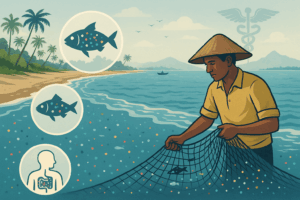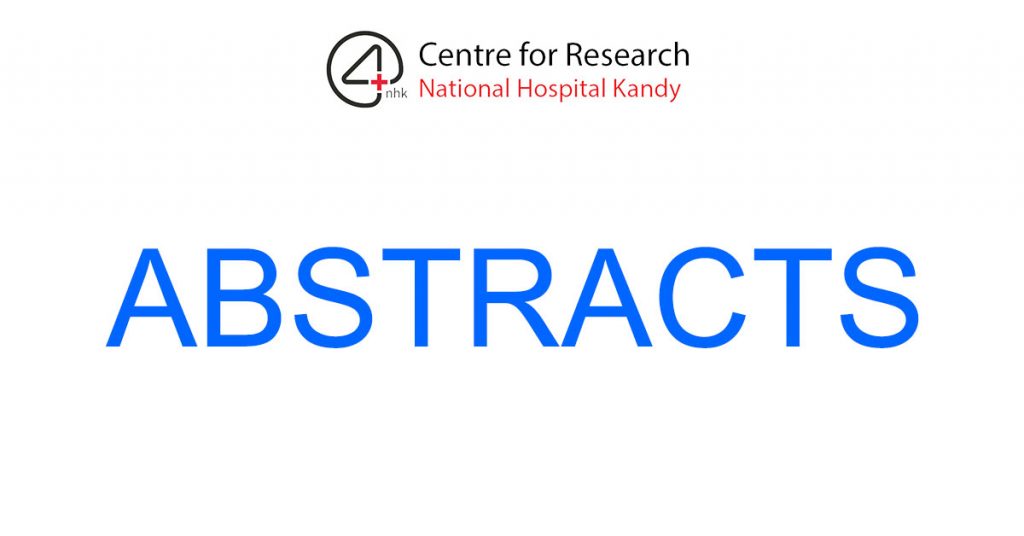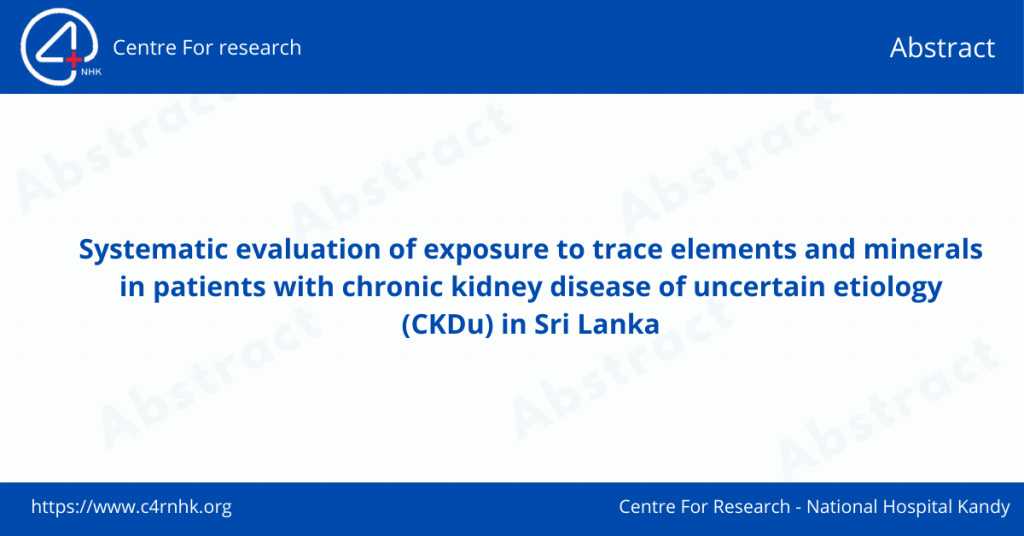 Microplastic pollution has moved from being a distant environmental concern to a very real public health issue in Sri Lanka. Plastic fragments smaller than 5 mm are now documented in rivers, coastal waters, coral reefs, sediments, and commonly eaten seafood [1]. A growing body of Sri Lankan research shows that these particles are not only widespread in the environment but are also entering the food chain in ways that could affect human health. This review critically examines current evidence, the policy response, and the key gaps that need attention if Sri Lanka is to move from documenting microplastics to actually protecting people.
Microplastic pollution has moved from being a distant environmental concern to a very real public health issue in Sri Lanka. Plastic fragments smaller than 5 mm are now documented in rivers, coastal waters, coral reefs, sediments, and commonly eaten seafood [1]. A growing body of Sri Lankan research shows that these particles are not only widespread in the environment but are also entering the food chain in ways that could affect human health. This review critically examines current evidence, the policy response, and the key gaps that need attention if Sri Lanka is to move from documenting microplastics to actually protecting people.
Evidence of microplastics in Sri Lankan aquatic environments
Several recent studies show that microplastics are now entrenched in Sri Lanka’s aquatic systems. Surface water surveys in and around the country’s most densely populated city (Colombo region) reported detectable microplastic particles in many urban water bodies, with concentrations often higher in areas with more built-up land and during periods of heavy rainfall [2]. These findings support the view that stormwater runoff, inadequate waste management and informal dumping are major pathways from land to rivers and lakes.
Work on the Mahaweli basin has confirmed that even tributaries feeding major drinking-water sources contain microplastics in both water and sediment, with higher loads downstream of urbanised or semi-urban stretches than in more forested or rural reaches [3]. At the coast, studies of coral reef ecosystems and coastal sediments have described diverse microplastic shapes (fibres, fragments, films) and polymers, often associated with areas of tourism, harbours and river mouths [4].
A synthesis focused on Negombo lagoon and adjacent marine areas showed that microplastics are present in water, sand, sediments and several aquatic species, underlining how quickly plastics move between environmental compartments in a heavily used coastal ecosystem [5]. Together, these studies indicate that Sri Lanka has already moved beyond the early stage of isolated detections; microplastic contamination is now systemic and linked to patterns of land use and waste mismanagement.
Human exposure through seafood and drinking water
For public health, the most worrying evidence concerns seafood and other routes by which people come into contact with microplastics.
Recent work on fish sold in Sri Lankan markets found microplastics in nearly all examined fresh fish and in almost half of the dried fish, particularly in small pelagic species like anchovies and sardines that are often eaten whole [6]. Another study of shrimp from aquaculture farms in Puttalam showed accumulation of microplastics in both exoskeleton and edible tissues, highlighting risk not only from wild-caught fish but also from farmed seafood [7]. Rock oysters collected along the west coast, similarly carried microplastic loads carried varied with local human activity, such as tourism and urbanisation [8].
These findings echo global work that has detected microplastics in a range of edible marine species, and they occur against a backdrop where seafood remains a major protein source for many Sri Lankans [9]. Microplastics in seafood may act as carriers for additives and absorbed pollutants (e.g. persistent organic pollutants and heavy metals), although the exact dose reaching human tissues via diet is still uncertain.
On the freshwater side, research has so far concentrated more on environmental measurements than on tap water or household wells. Reviews of Indo–Sri Lankan freshwater sediments highlight an almost complete lack of systematic studies on microplastics in Sri Lankan drinking-water sources, despite clear evidence of contamination in rivers and reservoirs that feed treatment plants [10]. This is a major blind spot, given the large number of people using surface water or shallow wells with minimal treatment.
Policy response and system-level drivers
Sri Lanka’s broader plastic problem is well recognised. A recent national inventory estimated that each urban resident contributes over 25 kg of plastic waste per year, with a large share of total plastic generation still arising from rural areas because most of the population lives outside cities [11]. Weak segregation, open dumping, burning of mixed waste, and the absence of properly engineered landfills in many areas mean that large quantities of plastic escape into waterways during every monsoon.
The X-Press Pearl container ship disaster off Colombo in 2021, which released enormous amounts of plastic pellets (nurdles) and chemicals into the sea, was a turning point in public awareness. Court rulings in 2025 ordered the shipping company to pay substantial compensation for the ecological and economic damage, and the case has been used to argue for stronger application of the “polluter pays” principle and better regulation of hazardous cargo [12]. However, this dramatic acute spill should not distract from the chronic, daily flow of microplastics from unmanaged waste, which is less visible but probably more important in the long term.
The government has introduced bans on certain single-use plastics and taken steps to regulate carrier bags and some packaging [1]. Yet local authorities often lack the resources, technical guidance and enforcement capacity to implement sustainable waste management. Without upstream reduction, better collection and proper disposal, even the best scientific data on microplastics will have a limited impact.
Key gaps and limitations in the current evidence
Despite the progress, several weaknesses in the current microplastics evidence base make it difficult to translate science into robust health guidance.
- Fragmented methods and limited comparability
Studies differ widely in sampling strategies, size ranges analysed, digestion and identification methods, and how results are reported (e.g. particles per litre vs. mass per volume). Reviews of microplastics in freshwater systems and the Indo–Sri Lankan region emphasise that this heterogeneity makes comparisons between sites and time periods challenging, and may obscure real trends [10]. A national framework for sampling and reporting would make future work more comparable and more useful for policy.
- Focus on occurrence, not health effects
Most Sri Lankan research documents where microplastics are found, in what quantities, and of which polymer types. Very few studies link these findings to biomarkers of human exposure or health outcomes, either in exposed communities or in vulnerable occupational groups such as fishers and waste workers [13]. Without such data, risk communication either becomes alarmist or, conversely, too reassuring.
- Limited coverage of drinking-water and indoor exposure
Given how many people rely on river-fed water schemes or wells adjacent to polluted streams, the near-absence of systematic testing of treated drinking water, household wells and bottled water is striking. Work from other countries suggests that indoor dust and food packaging can also be important sources of microplastic exposure, but these have barely been examined in Sri Lanka [14].
- Weak integration with economic and social analysis
Microplastic pollution intersects with tourism, fisheries, agriculture and informal recycling. Yet most studies are biophysical; very few quantify impacts on livelihoods, consumer confidence in seafood, or the long-term costs of water treatment. Commentary from engineering and environmental sectors has already called for national campaigns and economic analyses, but these perspectives remain under-represented in the peer-reviewed health literature [15].
Future directions: from documentation to prevention
To move forward, Sri Lanka needs a more coordinated, health-focused microplastics agenda that goes beyond simply counting particles.
- Standardised national monitoring
A national protocol for sampling, analysis and reporting would allow data from rivers, reservoirs, coastal zones and drinking water systems to be integrated into a single surveillance framework. This should include size classes down to at least 50–100 µm, as smaller particles may have greater biological relevance [10].
- Human exposure and health studies
Pilot biomonitoring (for example, microplastics in stool or biomarkers related to inflammation and oxidative stress) in groups with high seafood consumption or high environmental exposure would help to estimate real-world doses. Such work should be done in partnership with clinicians and toxicologists to ensure rigorous methods and ethical safeguards [13].
- Stronger link to water and food safety policies
Microplastic data should be incorporated into risk assessments for drinking water and seafood safety, alongside microbial and chemical contaminants. Even if safe thresholds are not yet established, trend monitoring can guide precautionary measures, such as improved filtration at treatment plants or targeted advisories for particularly contaminated products [2].
- Upstream reduction and circular waste management
Ultimately, reducing microplastics requires cutting plastic at the source. The national plastic inventory and waste-flow analyses can be used to prioritise high-leakage items (single-use packaging, sachets, non-recyclable films) and support a shift to reusable or genuinely recyclable alternatives, backed by extended producer responsibility and better local infrastructure [11].
- Public communication and community engagement
Finally, communication should strike a balance between awareness and practicality. Communities need clear, evidence-based messages on how to reduce plastic use, dispose of waste safely, and handle seafood and drinking water, without creating unnecessary panic. Civil society and professional groups can play a key role in translating emerging science into everyday action.
Conclusion
Microplastic pollution in Sri Lanka is no longer a theoretical problem. Evidence from rivers, lagoons, coral reefs, and seafood shows that these particles have become part of the country’s environmental reality and may already be entering human bodies through food and water. The scientific community has made important strides in documenting where microplastics occur, but the next phase must focus on health-relevant exposure, harmonised methods and stronger links to waste management and food- and water-safety policy. A coordinated, community-sensitive response—rooted in both science and social reality—will be essential if Sri Lanka is to protect both its ecosystems and its people from the long-term consequences of microplastic pollution.
References
- Perera P.I.A., Gomes P.A., Yan X.-F. Profiling microplastic pollution in surface water bodies in the most populated urban area of Sri Lanka. Water, Air, & Soil Pollution. 2023.
- Microplastic pollution of stream water and sediment in a tributary of the Mahaweli River, Sri Lanka’s largest river. 2024.
- Dharmadasa et al. Water quality and floating microplastics pollution along Southern to Western coastal waters of Sri Lanka. Sri Lanka Journal of Aquatic Sciences. 2024.
- Wootton N., Silva V., Giuretis D., et al. Microplastic presence in dried and fresh fish from seafood markets in Sri Lanka. Marine and Freshwater Research. 2024.
- Microplastic accumulation in *Saccostrea cucullata* along Sri Lanka’s west coastal belt: implications for seafood safety and policy recommendations. Proceedings of the International Conference on Fisheries and Aquaculture. 2025.
- A Comprehensive Investigation of Microplastic Contamination and Polymer Composition in Shrimp Species from Puttalam, Sri Lanka. Water, Air, & Soil Pollution. 2025.
- Microplastics in aquatic ecosystems of Negombo, Sri Lanka: a synthesis of current evidence. ICPES Proceedings. 2023.
- Lakchani et al. Microplastics in freshwater sediment in the Indo–Sri Lankan region: a methodological review. Microplastics. 2025.
- Evolving research perspectives on microplastic pollution: a focus on Sri Lanka. Ceylon Journal of Science. 2023.
- Environmental issues in Sri Lanka – plastic and microplastic pollution. Wikipedia and related summaries; accessed 2025.
- National Plastic Waste Inventory for Sri Lanka – reported in The Sunday Times (Sri Lanka), 2025.
12. Supreme Court ruling on compensation for the X-Press Pearl marine pollution disaster. Associated Press, 2025.
![]()


